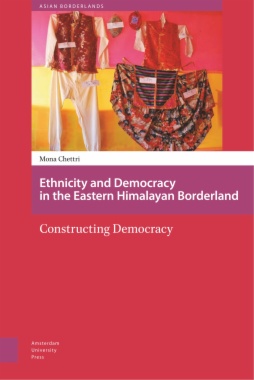This book presents a close look at the growth, success, and proliferation of ethnic politics on the peripheries of modern South Asia, built around a case study of the Nepal ethnic group that lives in the borderlands of Sikkim, Darjeeling, and east Nepal. Grounded in historical and ethnographic research, it critically examines the relationship between culture and politics in a geographical space that is home to a diverse range of ethnic identities, showing how new modes of political representation, cultural activism, and everyday politics have emerged from the region.
- Cover
- Contents
- List of Acronyms
- Glossary of Local Terms
- Acknowledgments
- Introduction
- Why Study the Eastern Himalayan Borderland?
- Studying the Eastern Himalayan Borderland: Same Same but Different
- Facilitating Ethnic Politics in the Eastern Himalaya
- Organisation of this Book
- 1. Locating the ‘Nepali’ in the Eastern Himalayan Borderland
- Becoming Nepali: Colonial History and Ethnic Group Formation
- Going to Muglan: Emigration from the Kingdom of Gorkha to India
- Language and Ethnic Group Formation
- Homogenisation of the Nepalis and its Impact on Identity Formation
- Gorkhaland: A Homeland for the Indian-Nepalis
- De-Constructing the Nepali in Sikkim
- Re-claiming Limbuwan
- Conclusion
- 2. The Ethnic Worldview: Framing Existential Grievances
- Limbus of Eastern Nepal and the Politics of ‘jati and nose’
- Discriminating against the Sons of the Soil – the Gorkhas of Darjeeling
- Fostering the Culture of Dependency in Sikkim
- Conclusion
- 3. Ethnic Identity as Political Identity
- The Political Resilience of the Brave Gorkha
- Neither Mongol nor Kirat: Asserting the Limbu Identity
- Claiming exclusive identities in Sikkim
- Conclusion
- 4. Manifestations of Ethnic Politics
- The Dress Code: Looking like a Gorkha
- Becoming a Tribe in Sikkim
- Limbus as the Embodiment of the Indigenous Discourse
- Conclusion
- 5. Constructing Democracy
- Emergence of a New Patronage Structure
- The New Elites
- Political Elites
- Expressing Agency through Ethnic Politics
- Regional Interpretation of Democracy
- Conclusion
- Conclusion
- Being Nepali Across Borders
- Of Ethnic Politics and Democratic Cultures
- Ethnic Politics as People’s Politics
- Bibliography
- Index
- List of Illustrations
- Figure 1 Map of Sikkim, Darjeeling and east Nepal
- Figure 2 The only solution - Gorkhaland
- Figure 3 Madhesh ko chacha’s shop in Soreng, West Sikkim
- Figure 4 Khukuri for sale in a local market in Darjeeling
- Figure 5 Writing on the wall:Bhutia, Lepcha or Nepali we are all Gorkhali
- Figure 6 Limboo artifacts on display at the Namchi Mahautsav, Sikkim
- Figure 7 Raakay-Julus: fire-torch procession in Ilam, organised by NEFIN
- Figure 8 Offices of ‘Limbuwan Parties’, Ilam

